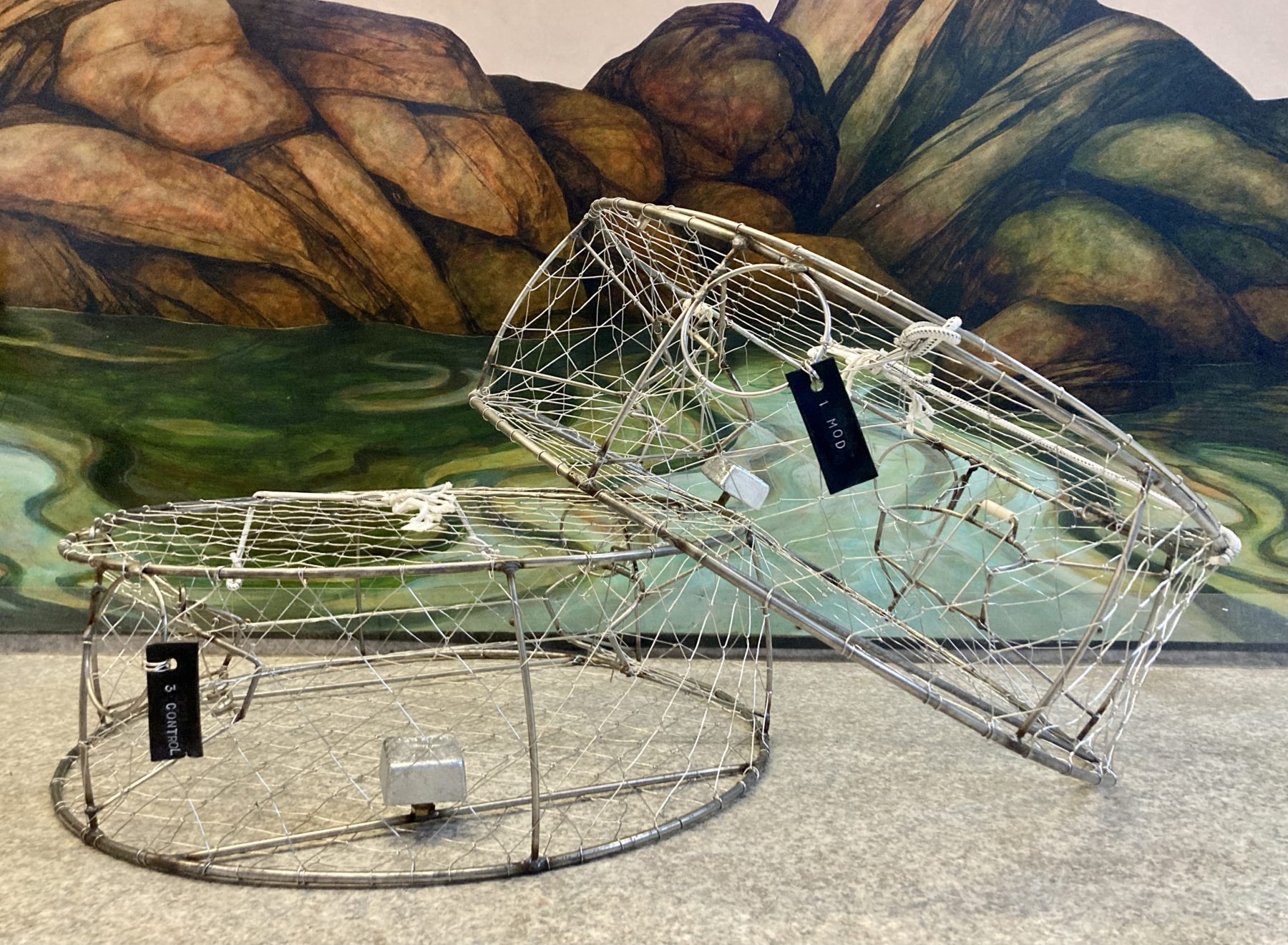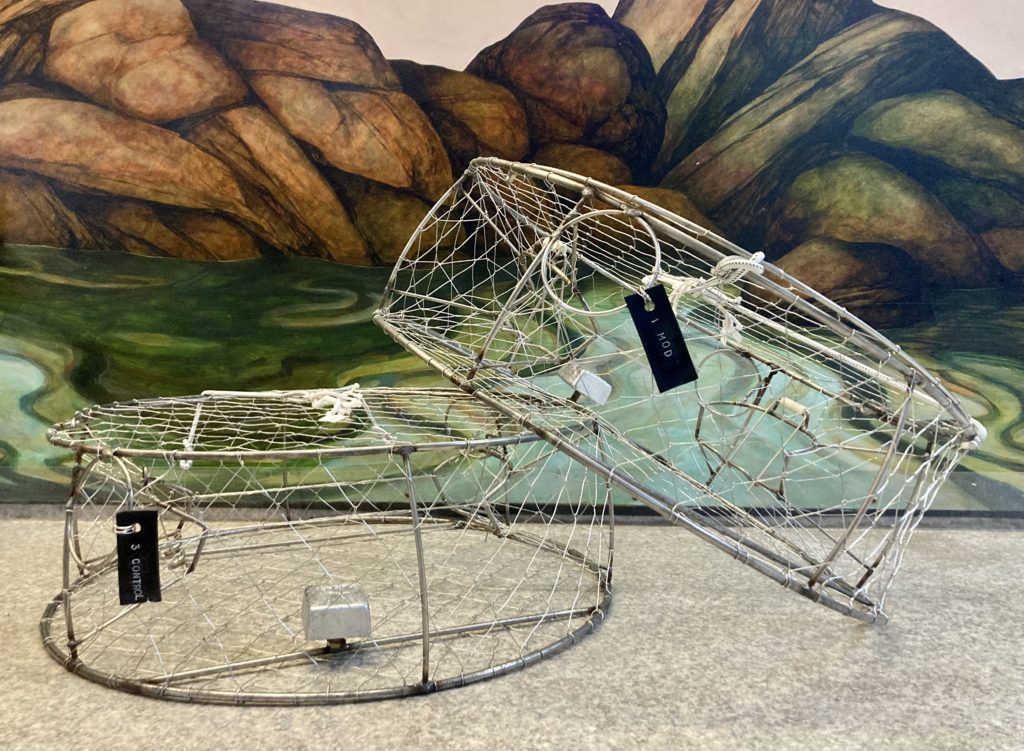
Research
Research
Research
Hinged on Success- SSSC’s Crab Pot Project
Trap loss is a common occurrence across crustacean fisheries that often results in lost gear that continues to capture and kill both targeted and bycatch species. In Southeast Alaska alone, the annual entrapment of Dungeness crabs in derelict traps was estimated to be at 4% of the annual harvest! Traps along the west coast are outfitted with a biodegradable rot cord that, once degraded, allows organisms a route to escape to help lessen the impacts of derelict gear on crustaceans. However, the efficacy of the biodegradable rot cord has been highly variable and, in some cases, not effective.
To address this variability, the Sitka Sound Science Center was contracted by the Virginia Institute of Marine Science (VIMS) to assess the use of biopolymer technology as a mechanism for Dungeness crab traps. The concept is to replace the stainless-steel hinges on the gates that allow crabs to enter the pots with a biopolymer that will degrade over time. Then if the gear outfitted with the hinges becomes lost the hinges will degrade through time and provide an exit for captured organisms.

Citizen science was an integral component of this project, with three local fishermen in Sitka given two modified and two unmodified crab pots to test how the hinges actively fished in Alaskan waters. They fished them for 6 weeks, gathering valuable data that will be used to help further sustainable crabbing technology. Results showed that there was no significant difference in catch rates between the modified crab pots and the unmodified crab pots. Downsides of the new hinges were that they were moderately fragile and time consuming to replace.

Overall, the biodegradable hinges as a potential alternative to the current mode (biodegradable rot cord cotton) is a somewhat useful application of the technology in Southeast Alaska, in its current form. More research will be conducted on how modified hinge strength influences catch rates and how to increase ease of use and accessibility for the fishing community.
